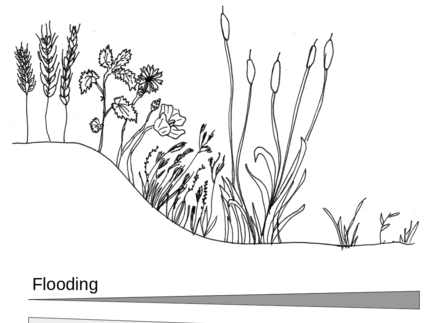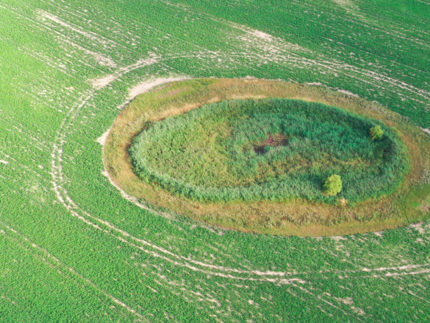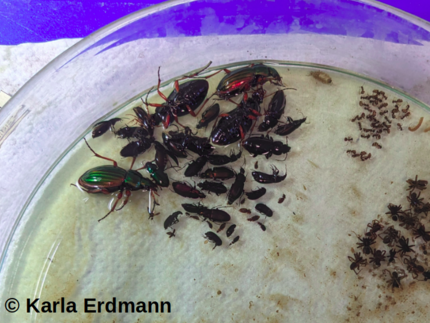BioHet – Biodiversity in Heterogeneous Environments
Environmental heterogeneity in space and time allows niche differentiation and coexistence among species. Heterogeneity is therefore considered a prerequisite for the maintenance of species diversity. However, recent advances have shown that the effects of heterogeneity on biodiversity are highly complex. In particular, it remains unclear how spatial and temporal heterogeneity interact across scales and ultimately affect species interactions. To gain a better understanding of how spatio-temporal heterogeneity affects ecological communities, we focus on small depressional wetlands ('kettle holes') as a study system.
These island-like habitats are typically surrounded by intensively used agricultural fields and are important refugia for different taxa in agricultural landscapes. At small spatial scales, kettle holes show significant changes in environmental conditions from the edge to the centre due to differences in elevation. In addition, they show strong variation in water levels within, but also between years, leading to unpredictable high temporal heterogeneity.
In 2019, we started a long-term biodiversity monitoring in kettle holes in north-eastern Brandenburg (Uckermark). This includes studies on vegetation and seed bank dynamics as well as ground-dwelling arthropods such as ground beetles, spiders, centipedes or woodlice.
We will continue these investigations and extend the experimental approaches to unravel the complexity of how heterogeneity influences dynamics between species. Contact us for possible master and bachelor theses (bergholzuuni-potsdampde).
People permanently involved
Publications
Bergholz K, Balthasar C, Weiss AM, Brunkhardt J, Ristow M, Weiss L (2023) Niche differentiation of arthropods and plants along small-scale gradients in temporary wetlands (kettle holes). Basic and Applied Ecology 73, 10-17. 10.1016/j.baae.2023.10.003
Completed theses
Balthasar, C (2020). The influence of small-scale heterogeneity on ground dwelling arthropod communities - a case study of kettle holes. Master thesis.
Brunkhardt, J (2021). The influence of small-scaleheterogeneous structures on spiders (Araneae) − a study of kettle holes in agricultural landscapes (Uckermark, Brandenburg). Master thesis.
Weiß, AM (2021). Assessing the influence of spatial gradients in kettle holes on above-and belowground plant communities. Master thesis.
Loor, E (2023). Einfluss kleinräumiger Heterogenität auf Laufkäfer (Carabidae) in Kleingewässern (Sölle). Bachelor thesis.
Terracina, N (2023). The Vegetation distribution of kettle holes along the internal gradient and their changes during dorught years. Bachelor thesis.
Pfaffmann, NRH (2024). Araneae (Webspinnen) in Söllen – Einfluss heterogener Strukturen auf die Abundanz und Artendiversität in verschiedenen Jahren. Bachelor thesis.
Boeckmann, C (2024). Tausendfüßer (Myriapoda) in Söllen der Uckermark – Einfluss kleinskaliger Gradienten auf die Artenzusammensetzung. Bachelor thesis.
Krippschock, L (2024). Abundanz und Diversität von Isopoden entlang kleinräumiger Gradienten. Bachelor thesis.
Mensching, M (2024). Disentangling the effects of habitat size and heterogeneity on different components of diversity. Bachelor thesis.
Tiepelmann, J (2024) Intraspezifische Körpergrößenvariation von Laufkäfern (Carabidae) entlang eines kleinskaligen Gradienten in Söllen in der Uckermark. Bachelor thesis.
Lucius, L (2025). Spatial and Temporal Patterns of Seed Banks in Temporary Wetlands. Master thesis.



